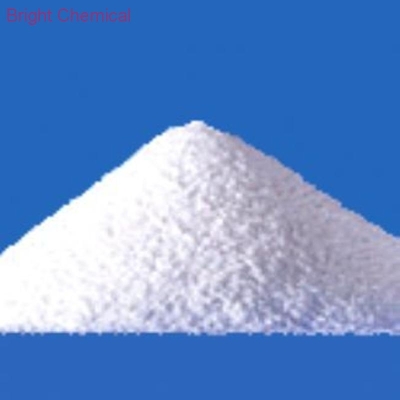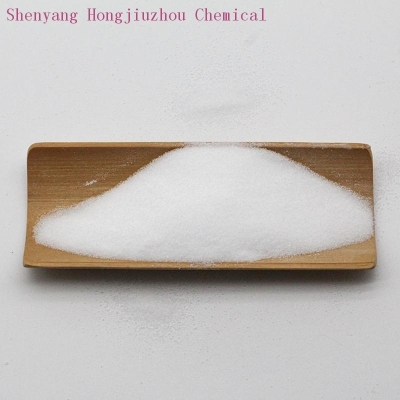-
Categories
-
Pharmaceutical Intermediates
-
Active Pharmaceutical Ingredients
-
Food Additives
- Industrial Coatings
- Agrochemicals
- Dyes and Pigments
- Surfactant
- Flavors and Fragrances
- Chemical Reagents
- Catalyst and Auxiliary
- Natural Products
- Inorganic Chemistry
-
Organic Chemistry
-
Biochemical Engineering
- Analytical Chemistry
- Cosmetic Ingredient
-
Pharmaceutical Intermediates
Promotion
ECHEMI Mall
Wholesale
Weekly Price
Exhibition
News
-
Trade Service
Recently, the Crop Pest Functional Genomics Research Innovation Team of the Institute of Plant Protection of the Chinese Academy of Agricultural Sciences published a titled "A monocot-specific hydroxycinnamoylputrescine gene cluster co" in the "Science Bulletin" (Science Bulletin).
ntributes to immunity and cell death in rice " research paper
.
The paper is the first report of monocots specific fatty aliphatic amine phenolic - hydroxy cinnamic acid putrescine (HP) gene cluster regulatory Rice immunological and molecular mechanisms of cell death
.
ntributes to immunity and cell death in rice " research paper
.
The paper is the first report of monocots specific fatty aliphatic amine phenolic - hydroxy cinnamic acid putrescine (HP) gene cluster regulatory Rice immunological and molecular mechanisms of cell death
.
Metabolic homeostasis plays a vital role in human health, and metabolic disorders often cause diseases
.
Studies have shown that metabolites also play an important role in plant growth and stress response
.
Phenolamine metabolites are secondary metabolites derived from plant phenylpropane pathway
.
Early studies found that pathogen infection can induce the accumulation of plant phenolamine metabolites, indicating that such metabolites may play an important role in plant immunity, but their biosynthesis and regulatory mechanisms are still unclear
.
.
Studies have shown that metabolites also play an important role in plant growth and stress response
.
Phenolamine metabolites are secondary metabolites derived from plant phenylpropane pathway
.
Early studies found that pathogen infection can induce the accumulation of plant phenolamine metabolites, indicating that such metabolites may play an important role in plant immunity, but their biosynthesis and regulatory mechanisms are still unclear
.
The study used metabolite-based whole-gene association analysis to identify gene clusters that control the synthesis of hydroxycinnamyl putrescine metabolites on rice chromosome 9
.
The gene cluster consists of an ornithine decarboxylase gene (OsODC) and two putrescine hydroxycinnamyltransferase genes (OsPHT3 and OsPHT4) in tandem
.
Functional analysis showed that all three genes in the gene cluster positively regulate rice disease resistance, and OsPHT3 and OsPHT4 positively regulate HP accumulation and rice cell death
.
Further research found that the promoter of OsPHT4 can be directly bound by APIP5, a transcription factor that negatively regulates rice immunity and cell death
.
APIP5 transcriptionally inhibits the expression of OsPHT4 and negatively regulates the accumulation of HP
.
In addition, the researchers used comparative genomics analysis to find that HP gene clusters are conserved in monocots, suggesting that HP gene clusters may have similar biological functions and regulatory mechanisms in monocots
.
This study reveals the biosynthesis of monocotyledonous plant-specific aliphatic phenolamine metabolism gene clusters and new mechanisms for regulating plant immunity and cell death, providing new ideas for revealing plant cell death and immune mechanisms at the metabolic level, and for disease resistance Molecular breeding has laid an important theoretical foundation
.
.
The gene cluster consists of an ornithine decarboxylase gene (OsODC) and two putrescine hydroxycinnamyltransferase genes (OsPHT3 and OsPHT4) in tandem
.
Functional analysis showed that all three genes in the gene cluster positively regulate rice disease resistance, and OsPHT3 and OsPHT4 positively regulate HP accumulation and rice cell death
.
Further research found that the promoter of OsPHT4 can be directly bound by APIP5, a transcription factor that negatively regulates rice immunity and cell death
.
APIP5 transcriptionally inhibits the expression of OsPHT4 and negatively regulates the accumulation of HP
.
In addition, the researchers used comparative genomics analysis to find that HP gene clusters are conserved in monocots, suggesting that HP gene clusters may have similar biological functions and regulatory mechanisms in monocots
.
This study reveals the biosynthesis of monocotyledonous plant-specific aliphatic phenolamine metabolism gene clusters and new mechanisms for regulating plant immunity and cell death, providing new ideas for revealing plant cell death and immune mechanisms at the metabolic level, and for disease resistance Molecular breeding has laid an important theoretical foundation
.
Hydroxycinnamyl putrescine gene cluster regulates plant immunity and cell death model
Fang Hong, a visiting doctoral student at the Institute of Plant Protection, Chinese Academy of Agricultural Sciences, and Shen Shuangqian, a doctoral student at Huazhong Agricultural University, are the co-first authors
.
Researcher Ning Joseph of the Institute of Plant Protection of the Chinese Academy of Agricultural Sciences and Professor Luo Jie of Hainan University are the co-corresponding authors of the article
.
This work is supported by scientific research funds such as the National Natural Science Foundation of China, the National Key R&D Program and the Postdoctoral Fund
.
.
Researcher Ning Joseph of the Institute of Plant Protection of the Chinese Academy of Agricultural Sciences and Professor Luo Jie of Hainan University are the co-corresponding authors of the article
.
This work is supported by scientific research funds such as the National Natural Science Foundation of China, the National Key R&D Program and the Postdoctoral Fund
.
Original link: https:// Recently, the Crop Pest Functional Genomics Research Innovation Team of the Institute of Plant Protection of the Chinese Academy of Agricultural Sciences published a titled "A monocot-specific hydroxycinnamoylputrescine gene cluster co" in the "Science Bulletin" (Science Bulletin).
ntributes to immunity and cell death in rice " research paper
.
The paper is the first report of monocots specific fatty aliphatic amine phenolic - hydroxy cinnamic acid putrescine (HP) gene cluster regulatory Rice immunological and molecular mechanisms of cell death
.
Pest geneFat cinnamon rice immunityntributes to immunity and cell death in rice " research paper
.
The paper is the first report of monocots specific fatty aliphatic amine phenolic - hydroxy cinnamic acid putrescine (HP) gene cluster regulatory Rice immunological and molecular mechanisms of cell death
.
Metabolic homeostasis plays a vital role in human health, and metabolic disorders often cause diseases
.
Studies have shown that metabolites also play an important role in plant growth and stress response
.
Phenolamine metabolites are secondary metabolites derived from plant phenylpropane pathway
.
Early studies found that pathogen infection can induce the accumulation of plant phenolamine metabolites, indicating that such metabolites may play an important role in plant immunity, but their biosynthesis and regulatory mechanisms are still unclear
.
.
Studies have shown that metabolites also play an important role in plant growth and stress response
.
Phenolamine metabolites are secondary metabolites derived from plant phenylpropane pathway
.
Early studies found that pathogen infection can induce the accumulation of plant phenolamine metabolites, indicating that such metabolites may play an important role in plant immunity, but their biosynthesis and regulatory mechanisms are still unclear
.
The study used metabolite-based whole-gene association analysis to identify gene clusters that control the synthesis of hydroxycinnamyl putrescine metabolites on rice chromosome 9
.
The gene cluster consists of an ornithine decarboxylase gene (OsODC) and two putrescine hydroxycinnamyltransferase genes (OsPHT3 and OsPHT4) in tandem
.
Functional analysis showed that all three genes in the gene cluster positively regulate rice disease resistance, and OsPHT3 and OsPHT4 positively regulate HP accumulation and rice cell death
.
Further research found that the promoter of OsPHT4 can be directly bound by APIP5, a transcription factor that negatively regulates rice immunity and cell death
.
APIP5 transcriptionally inhibits the expression of OsPHT4 and negatively regulates the accumulation of HP
.
In addition, the researchers used comparative genomics analysis to find that HP gene clusters are conserved in monocots, suggesting that HP gene clusters may have similar biological functions and regulatory mechanisms in monocots
.
This study reveals the biosynthesis of monocotyledonous plant-specific aliphatic phenolamine metabolism gene clusters and new mechanisms for regulating plant immunity and cell death, providing new ideas for revealing plant cell death and immune mechanisms at the metabolic level, and for disease resistance Molecular breeding has laid an important theoretical foundation
.
.
The gene cluster consists of an ornithine decarboxylase gene (OsODC) and two putrescine hydroxycinnamyltransferase genes (OsPHT3 and OsPHT4) in tandem
.
Functional analysis showed that all three genes in the gene cluster positively regulate rice disease resistance, and OsPHT3 and OsPHT4 positively regulate HP accumulation and rice cell death
.
Further research found that the promoter of OsPHT4 can be directly bound by APIP5, a transcription factor that negatively regulates rice immunity and cell death
.
APIP5 transcriptionally inhibits the expression of OsPHT4 and negatively regulates the accumulation of HP
.
In addition, the researchers used comparative genomics analysis to find that HP gene clusters are conserved in monocots, suggesting that HP gene clusters may have similar biological functions and regulatory mechanisms in monocots
.
This study reveals the biosynthesis of monocotyledonous plant-specific aliphatic phenolamine metabolism gene clusters and new mechanisms for regulating plant immunity and cell death, providing new ideas for revealing plant cell death and immune mechanisms at the metabolic level, and for disease resistance Molecular breeding has laid an important theoretical foundation
.
Hydroxycinnamyl putrescine gene cluster regulates plant immunity and cell death model
Hydroxycinnamyl putrescine gene cluster regulates plant immunity and cell death model Fang Hong, a visiting doctoral student at the Institute of Plant Protection, Chinese Academy of Agricultural Sciences, and Shen Shuangqian, a doctoral student at Huazhong Agricultural University, are the co-first authors
.
Researcher Ning Joseph of the Institute of Plant Protection of the Chinese Academy of Agricultural Sciences and Professor Luo Jie of Hainan University are the co-corresponding authors of the article
.
This work is supported by scientific research funds such as the National Natural Science Foundation of China, the National Key R&D Program and the Postdoctoral Fund
.
.
Researcher Ning Joseph of the Institute of Plant Protection of the Chinese Academy of Agricultural Sciences and Professor Luo Jie of Hainan University are the co-corresponding authors of the article
.
This work is supported by scientific research funds such as the National Natural Science Foundation of China, the National Key R&D Program and the Postdoctoral Fund
.
Original link: https://







